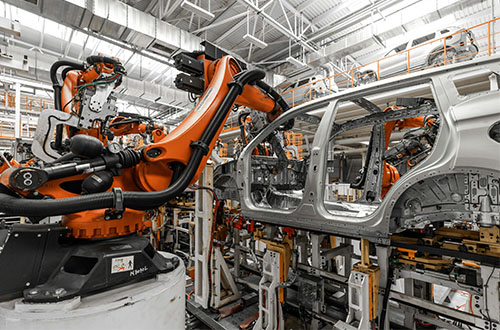

State Court Database and Application Modernization Realizes $24 million ROI in Less Than a Year

Industry: Public Sector
Headquarters: U.S.
Coverage: Statewide
Our Customer
The Customer is the administrative arm of the Supreme Court of a large U.S. state, serving over ten million residents. They provide a wide range of resources and support services to lower courts statewide for information technology, communications, human resources, finance, law, court programs, research, education and security.
The Challenge
The Customer’s Administrative Office of the Courts (AOC) required a complete database modernization and restructuring of its IT divisions. Previously independent statewide automation and information technology departments had been merged into a unified Judicial Automation Department, with the goal of unifying and modernizing the IT operations of both the AOC and all the appellate courts.
In addition, the existing AOC Criminal Case Management System was deployed primarily in the county judicial, court administration and court clerks’ offices, providing comprehensive case management and processing, including production of forms, notices and reports. However, the newly formed Judicial Automation Department would now be tasked with supporting all these AOC and Supreme Court computer systems. This department also needed to provide capabilities for statewide inquiries and electronic data transmission to and from various state agencies, including disposition reporting by the state police and financial reporting by the Department of Revenue.
A global systems integrator was brought in as the prime contractor for the assessment and modernization of the Customer’s existing computer operations. However, they lacked the necessary solutions, methodologies and experience in database modernization and consolidation of such a large, disparate set of systems. They therefore retained mLogica, tasking our database and applications modernization team to manage the migration and consolidation of all legacy systems and data into a modern, unified system.
The Solution
The scope of this project included almost a dozen heterogeneous systems containing data from over sixty counties across the state. One database alone housed records from over seventy distinct systems and sixty judicial districts. In addition, mLogica was responsible for securely migrating the accounting functionality from each legacy system.
Our team was tasked with developing the overall migration strategy and deployment of all the state’s criminal case data into the new centralized database. This modernization initiative also needed to align with organizational changes being made within the Judicial Automation Department, with a new management structure that optimally leveraged the skill sets of existing staff.
While this project was vital to enhance the agility of the Customer’s business systems and reduce support costs, due to the criticality of the statewide court system, it was also imperative that there be minimal impact to the daily operations of this highly visible government organization. Any downtime or lack of performance would have affected the core of the state judicial system and created highly publicized reputational issues.
Traditionally, IT organizations have tried to deliver these projects using in-house staff to manually convert application code, a time- and labor-intensive process prone to high rates of human error. Multiple studies have shown that manual migrations are six times more likely to fail due to errors and timeline and cost overruns.
After assessing all the disparate technologies and interdependencies of the existing systems, the mLogica team concluded that manual migration and consolidation of all the various databases and applications would demand prohibitively long timelines and significant human resources. Manual data migrations are also high-risk, especially when they disrupt mission-critical systems and divert staff from their daily business roles.
Leveraging reinforced machine learning (ML) and generative AI (GenAI), mLogica solutions such as STAR*M Distributed Workload Modernization and LIBER*M Mainframe Modernization Suite automate the labor-intensive work of migrating and consolidating complex, mission-critical databases and applications, virtually eliminating human error. For this project, mLogica’s automated solutions and our database and applications modernization team’s expertise enabled the rapid migration and consolidation of all legacy environments to a single modern platform with no user disruption.
The Benefits
As a result of this successful modernization and consolidation, the Customer significantly reduced the costs associated with maintaining multiple separate legacy databases and applications, while streamlining operations and gaining key new functionality. By migrating to a more modern platform, they also achieved a dramatic return on investment: approximately $24.1 million in less than a year!
Conclusion
Moving disparate legacy applications and systems to a consolidated, modern environment with minimal disruption requires speed and consistency, a combination only an automated conversion tool can deliver. However, automation alone is not enough; a successful modernization initiative also requires proven methodology and an experienced project team.
Equally important is experience; the knowledge of where to look for potential issues, the ability to anticipate surprises and to be prepared with viable solutions. This proven combination of automation, methodology and experience is how the mLogica database and applications modernization team designed and deployed this project with great success.








































